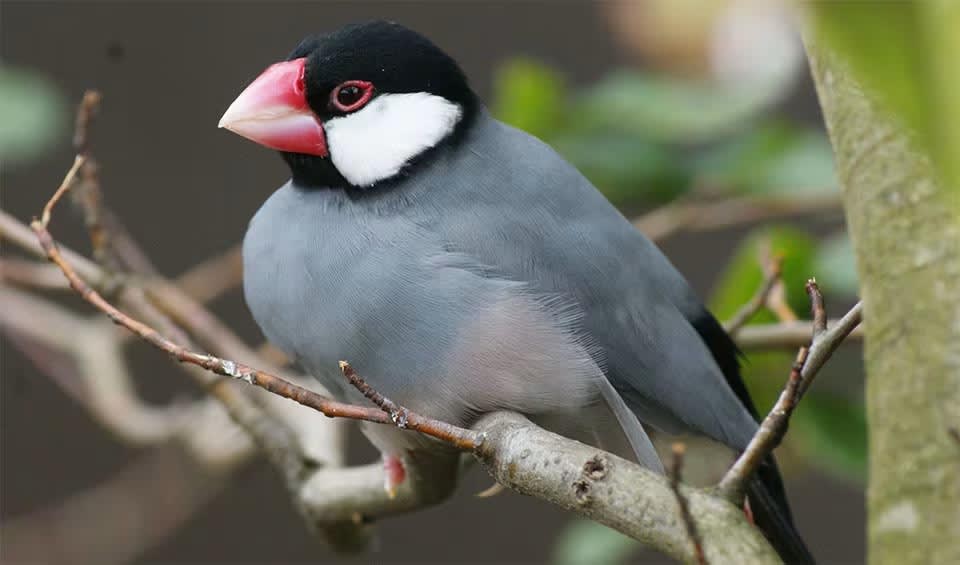An enchanting bird that originates from the islands of Indonesia but has spread to various parts of the world due to its popularity as a pet. This bird is beloved for its charming appearance and social nature, making it a favorite among bird enthusiasts.
The Java sparrow’s color palette is quite striking – it sports a predominantly soft gray body with a harmoniously contrasting black head. The cheeks are a vivid white, and the crown, throat, and upper breast are also black, creating a distinctive and appealing look. One of its most noticeable features is its thick beak, which is usually a vibrant pink or red, adding a splash of color that stands out against its more muted body tones. The eyes are encircled with a thin white ring, and the legs are a matching pink, rounding off its colorful appearance.
Java sparrows are known for their gregarious nature. In the wild, they are typically found in large flocks, sometimes comprising hundreds of birds, which helps provide safety in numbers from predators. They feed primarily on seeds, particularly rice, which historically led to conflicts with farmers in their native regions. In addition to seeds, their diet can include other plant materials and some insects, which they might consume during their breeding season to meet higher nutritional demands.
These birds are also famous for their pleasant chirping sounds, which, while not as melodious as some songbirds, have a cheerful and rhythmic quality that many people enjoy. In captivity, they are known for their friendly disposition, often engaging in playful activities both with other birds and their human caretakers. They can be quite affectionate, engaging in mutual preening and social bonding behaviors that make them delightful companions.
Distribution
 Brunei
Brunei Christmas Island
Christmas Island Fiji
Fiji Indonesia
Indonesia Malaysia
Malaysia Mexico
Mexico Philippines
Philippines Puerto Rico
Puerto Rico Sri Lanka
Sri Lanka United States
United StatesAnything we've missed?
Help us improve this page by suggesting edits. Glory never dies!
Suggest an editGet to know me
Terrestrial / Aquatic
Altricial / Precocial
Polygamous / Monogamous
Dimorphic / Monomorphic (size)
Active: Diurnal / Nocturnal
Social behavior: Solitary / Pack / Flock
Diet: Carnivore / Grainivore / Omnivore / Piscivorous / Insectivore
Migratory: Yes / No
Domesticated: Yes / No
Dangerous: Yes / No




